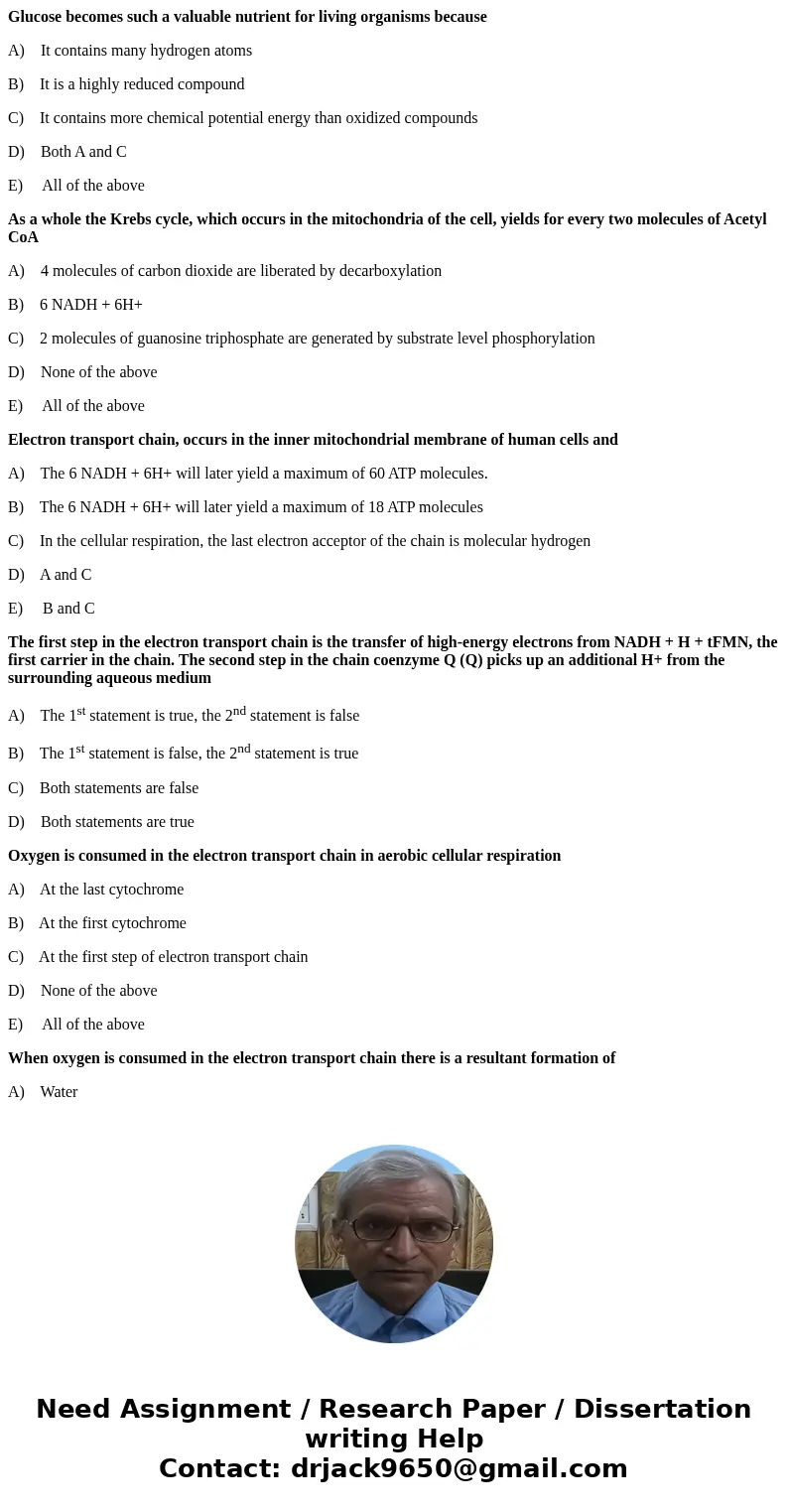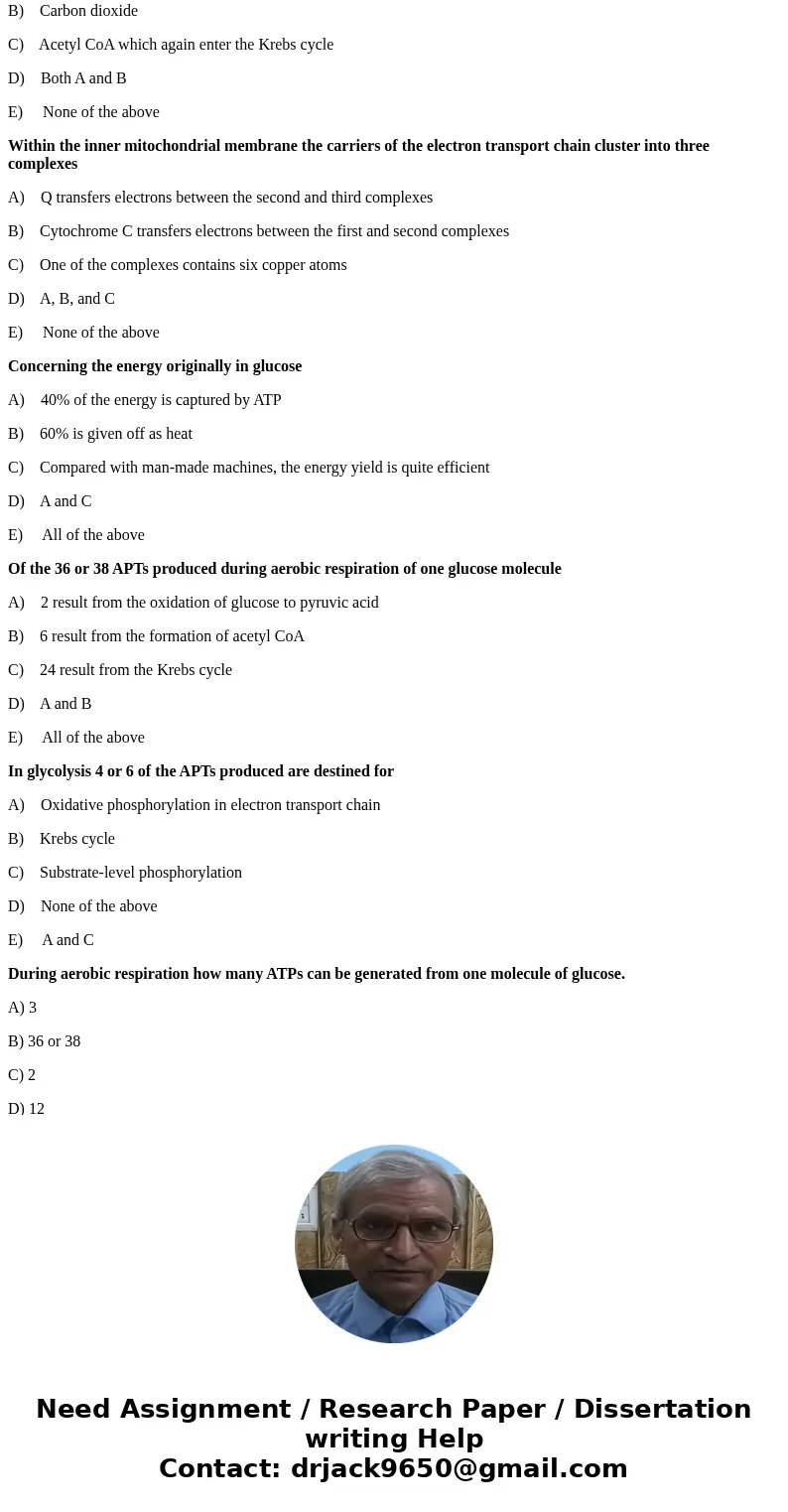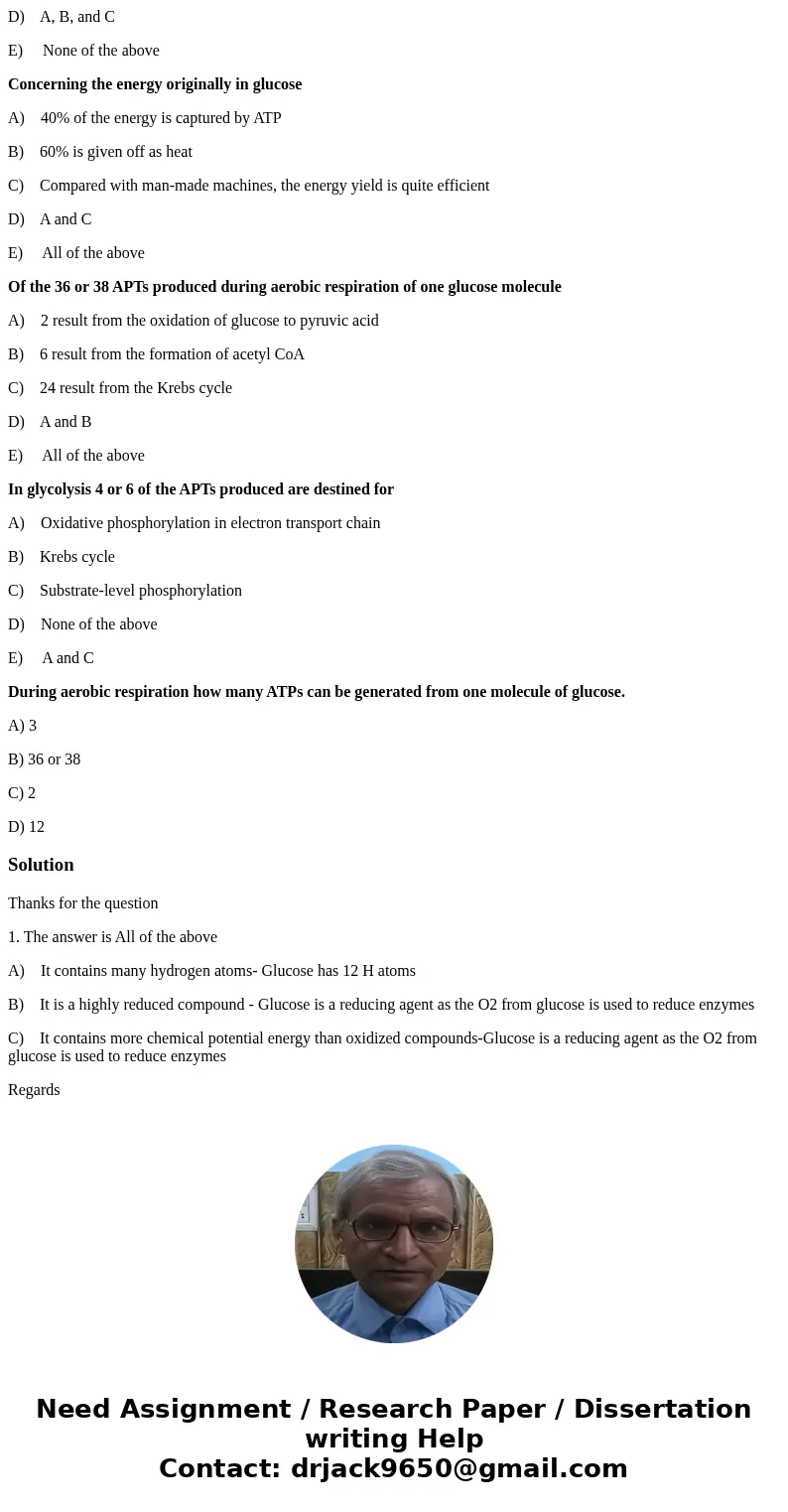Glucose becomes such a valuable nutrient for living organism
Glucose becomes such a valuable nutrient for living organisms because
A) It contains many hydrogen atoms
B) It is a highly reduced compound
C) It contains more chemical potential energy than oxidized compounds
D) Both A and C
E) All of the above
As a whole the Krebs cycle, which occurs in the mitochondria of the cell, yields for every two molecules of Acetyl CoA
A) 4 molecules of carbon dioxide are liberated by decarboxylation
B) 6 NADH + 6H+
C) 2 molecules of guanosine triphosphate are generated by substrate level phosphorylation
D) None of the above
E) All of the above
Electron transport chain, occurs in the inner mitochondrial membrane of human cells and
A) The 6 NADH + 6H+ will later yield a maximum of 60 ATP molecules.
B) The 6 NADH + 6H+ will later yield a maximum of 18 ATP molecules
C) In the cellular respiration, the last electron acceptor of the chain is molecular hydrogen
D) A and C
E) B and C
The first step in the electron transport chain is the transfer of high-energy electrons from NADH + H + tFMN, the first carrier in the chain. The second step in the chain coenzyme Q (Q) picks up an additional H+ from the surrounding aqueous medium
A) The 1st statement is true, the 2nd statement is false
B) The 1st statement is false, the 2nd statement is true
C) Both statements are false
D) Both statements are true
Oxygen is consumed in the electron transport chain in aerobic cellular respiration
A) At the last cytochrome
B) At the first cytochrome
C) At the first step of electron transport chain
D) None of the above
E) All of the above
When oxygen is consumed in the electron transport chain there is a resultant formation of
A) Water
B) Carbon dioxide
C) Acetyl CoA which again enter the Krebs cycle
D) Both A and B
E) None of the above
Within the inner mitochondrial membrane the carriers of the electron transport chain cluster into three complexes
A) Q transfers electrons between the second and third complexes
B) Cytochrome C transfers electrons between the first and second complexes
C) One of the complexes contains six copper atoms
D) A, B, and C
E) None of the above
Concerning the energy originally in glucose
A) 40% of the energy is captured by ATP
B) 60% is given off as heat
C) Compared with man-made machines, the energy yield is quite efficient
D) A and C
E) All of the above
Of the 36 or 38 APTs produced during aerobic respiration of one glucose molecule
A) 2 result from the oxidation of glucose to pyruvic acid
B) 6 result from the formation of acetyl CoA
C) 24 result from the Krebs cycle
D) A and B
E) All of the above
In glycolysis 4 or 6 of the APTs produced are destined for
A) Oxidative phosphorylation in electron transport chain
B) Krebs cycle
C) Substrate-level phosphorylation
D) None of the above
E) A and C
During aerobic respiration how many ATPs can be generated from one molecule of glucose.
A) 3
B) 36 or 38
C) 2
D) 12
Solution
Thanks for the question
1. The answer is All of the above
A) It contains many hydrogen atoms- Glucose has 12 H atoms
B) It is a highly reduced compound - Glucose is a reducing agent as the O2 from glucose is used to reduce enzymes
C) It contains more chemical potential energy than oxidized compounds-Glucose is a reducing agent as the O2 from glucose is used to reduce enzymes
Regards



 Homework Sourse
Homework Sourse